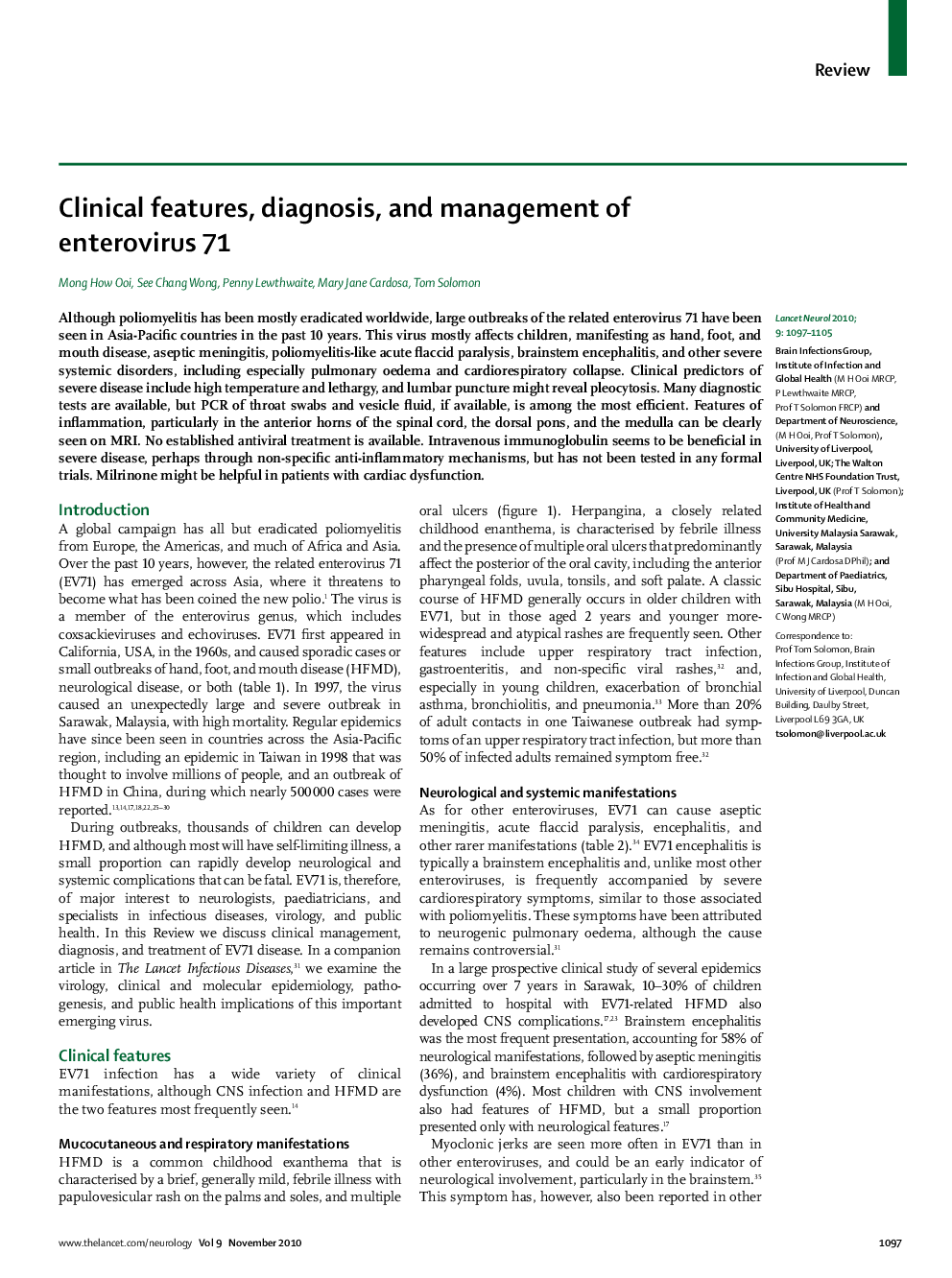| Article ID | Journal | Published Year | Pages | File Type |
|---|---|---|---|---|
| 3067247 | The Lancet Neurology | 2010 | 9 Pages |
SummaryAlthough poliomyelitis has been mostly eradicated worldwide, large outbreaks of the related enterovirus 71 have been seen in Asia-Pacific countries in the past 10 years. This virus mostly affects children, manifesting as hand, foot, and mouth disease, aseptic meningitis, poliomyelitis-like acute flaccid paralysis, brainstem encephalitis, and other severe systemic disorders, including especially pulmonary oedema and cardiorespiratory collapse. Clinical predictors of severe disease include high temperature and lethargy, and lumbar puncture might reveal pleocytosis. Many diagnostic tests are available, but PCR of throat swabs and vesicle fluid, if available, is among the most efficient. Features of inflammation, particularly in the anterior horns of the spinal cord, the dorsal pons, and the medulla can be clearly seen on MRI. No established antiviral treatment is available. Intravenous immunoglobulin seems to be beneficial in severe disease, perhaps through non-specific anti-inflammatory mechanisms, but has not been tested in any formal trials. Milrinone might be helpful in patients with cardiac dysfunction.
